Order Columbiformes Higher classification Patagioenas | Phylum Chordata Scientific name Patagioenas fasciata Rank Species | |
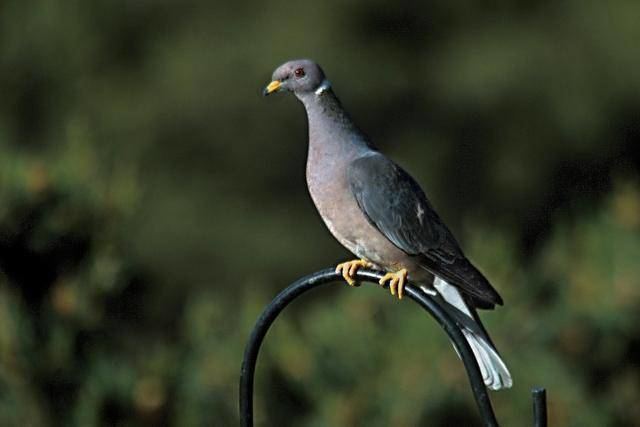 | ||
Similar Pigeons and doves, Bird, Patagioenas, White‑winged dove, Western wood pewee | ||
April 29 2014 16 07 band tailed pigeon
The band-tailed pigeon (Patagioenas fasciata) is a medium-sized bird of the Americas. Its closest relatives are the Chilean pigeon, passenger pigeon and the ring-tailed pigeon, which form a clade of Patagioenas with a terminal tail band and iridescent plumage on their necks. Some authorities split this species into the northern band-tailed pigeon (Patagioenas fasciata) and the southern band-tailed pigeon (Patagioenas albilinea).
Contents
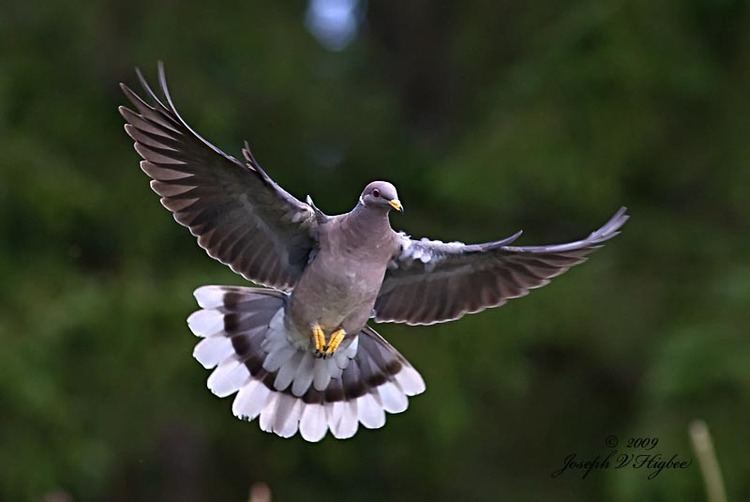
It ranges from British Columbia, Washington, Oregon, California, and southern Arizona south in higher elevations through Mexico and Central America to northern Argentina. In autumn it migrates out of its permanent resident range into northern California, New Mexico, and parts of Utah and Colorado. Populations from Costa Rica south are sometimes considered a separate species, the white-naped pigeon (P. albilinea). It is found at altitudes from 900 to 3,600 m (3,000 to 12,000 ft), generally in oak, pine-oak, and coniferous forests. It feeds on seeds, notably acorns.
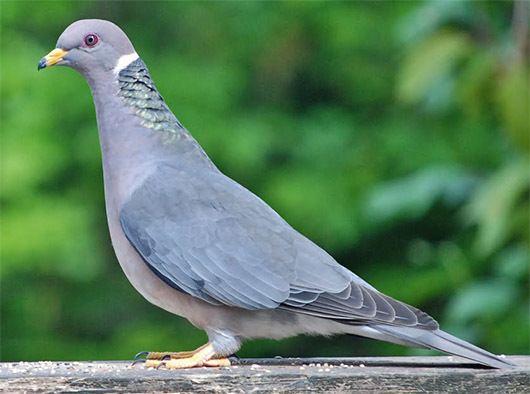
Band tailed pigeon
Description
It is the biggest pigeon in North America, measuring 33 to 40 cm (13 to 16 in) long and weighing 225–515 g (7.9–18.2 oz). The coastal subspecies P. f. monilis (averaging 392 g (13.8 oz)) is larger than the inland subspecies (averaging 340 g (12 oz)). The plumage is gray, somewhat darker above. The head and underparts have a faint pink cast, especially in the adult male; the belly is nearly white. The distal half of the tail is also pale (except in the subspecies of Baja California), whence the English name. The bill and feet are yellow, good identification marks at sufficiently close range. Adults have green iridescence on the back of the neck, adjacent to a thin white collar on the nape. Juvenile birds have white feather edges above, giving a scaly appearance.
Behavior and ecology
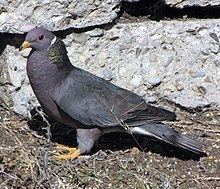
This species is relatively quiet for a pigeon. Its voice is low-pitched and owl-like, often in two-syllable calls that rise and then fall (huu-ooh) with even spacing between calls.
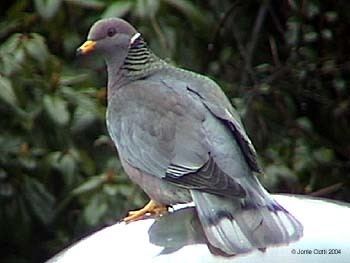
It builds a rudimentary platform nest out of twigs, in which it lays one or two eggs. Outside the breeding season it forms flocks, sometimes over 50 birds, and often becomes nomadic, following the acorn crop or moving to lower altitudes or other areas outside its breeding range. Toyon berries are a food consumed by the band-tailed pigeon. This species often visits bird feeders.
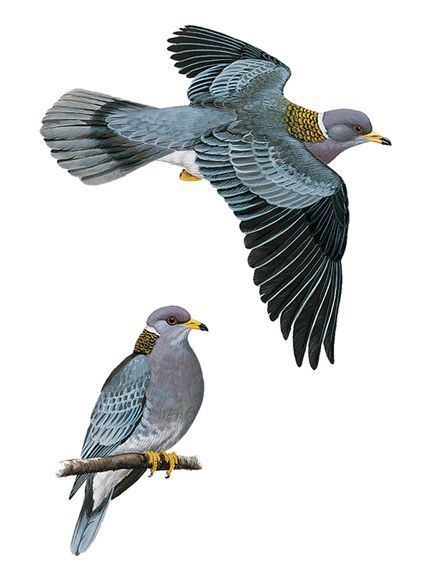
The parasitic louse Columbicola extinctus, believed to have become extinct with the extinction of the passenger pigeon, was recently rediscovered on the band-tailed pigeon. The band-tailed pigeon is the closest genetic relative of the passenger pigeon and has been investigated for being used in efforts to bring back that extinct species.
